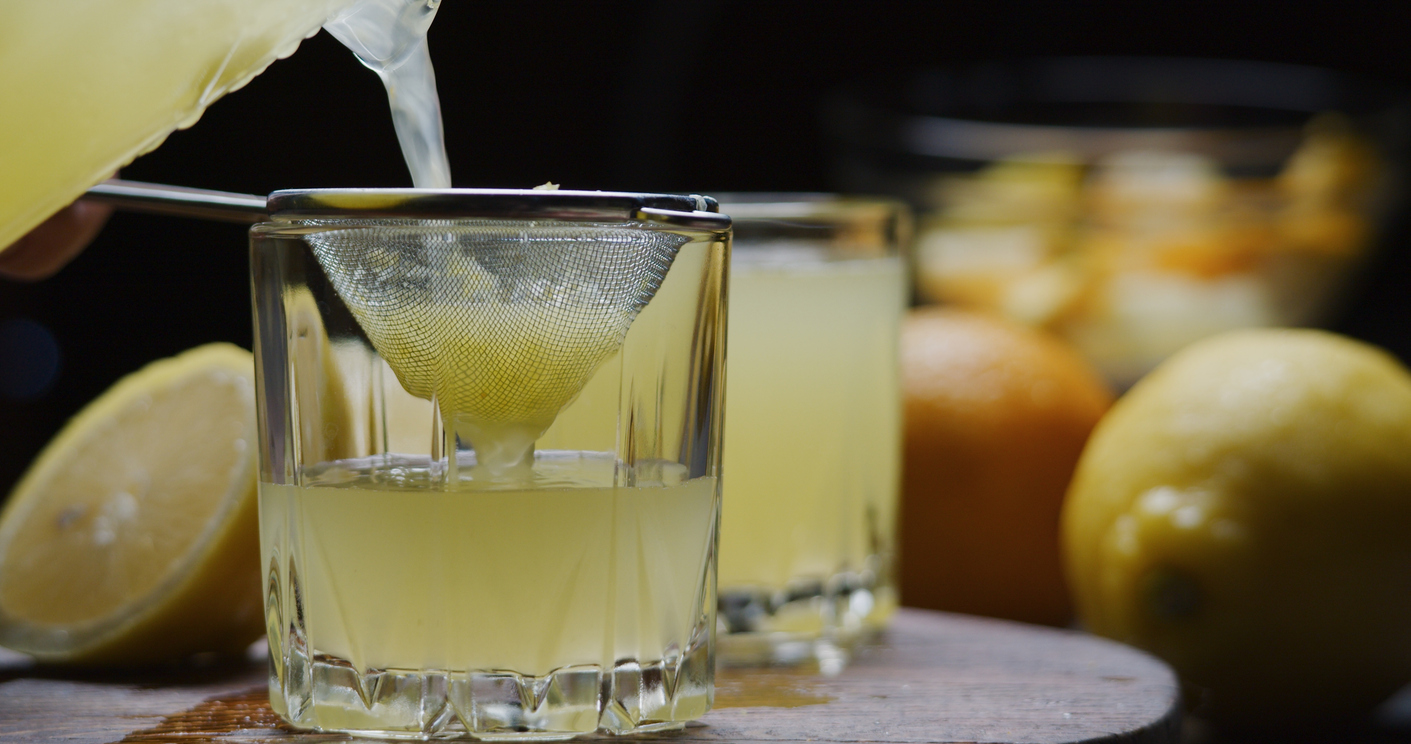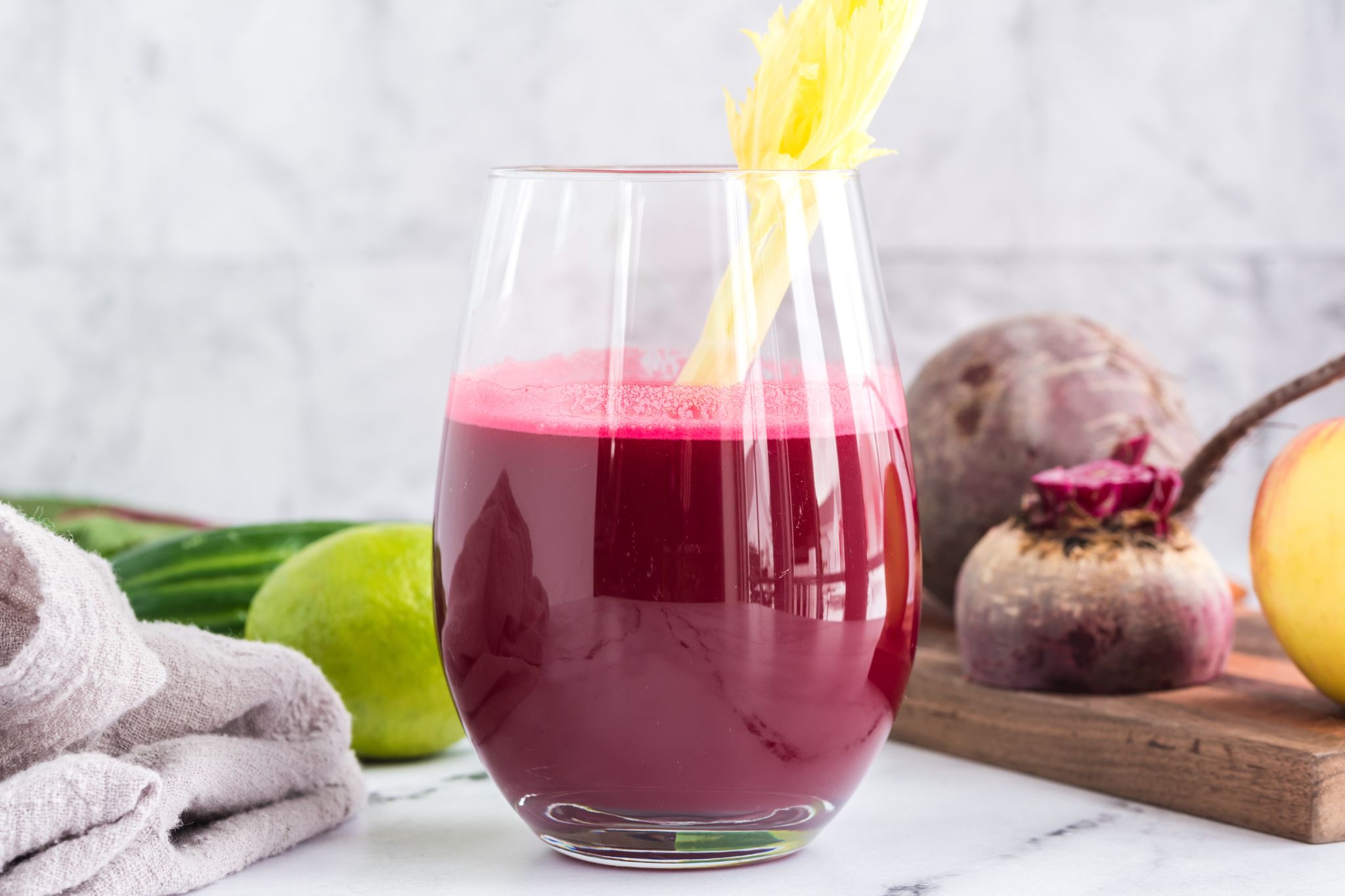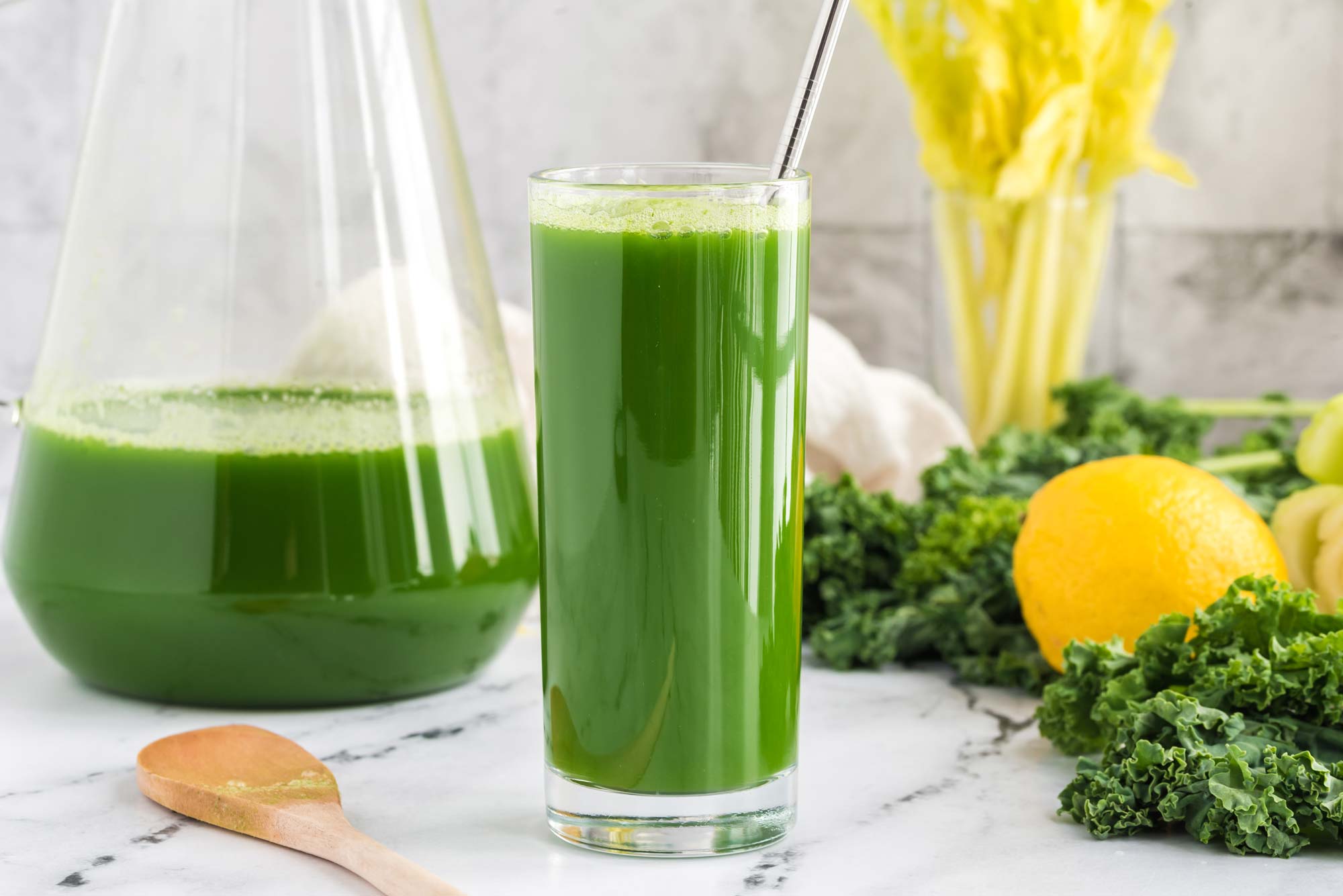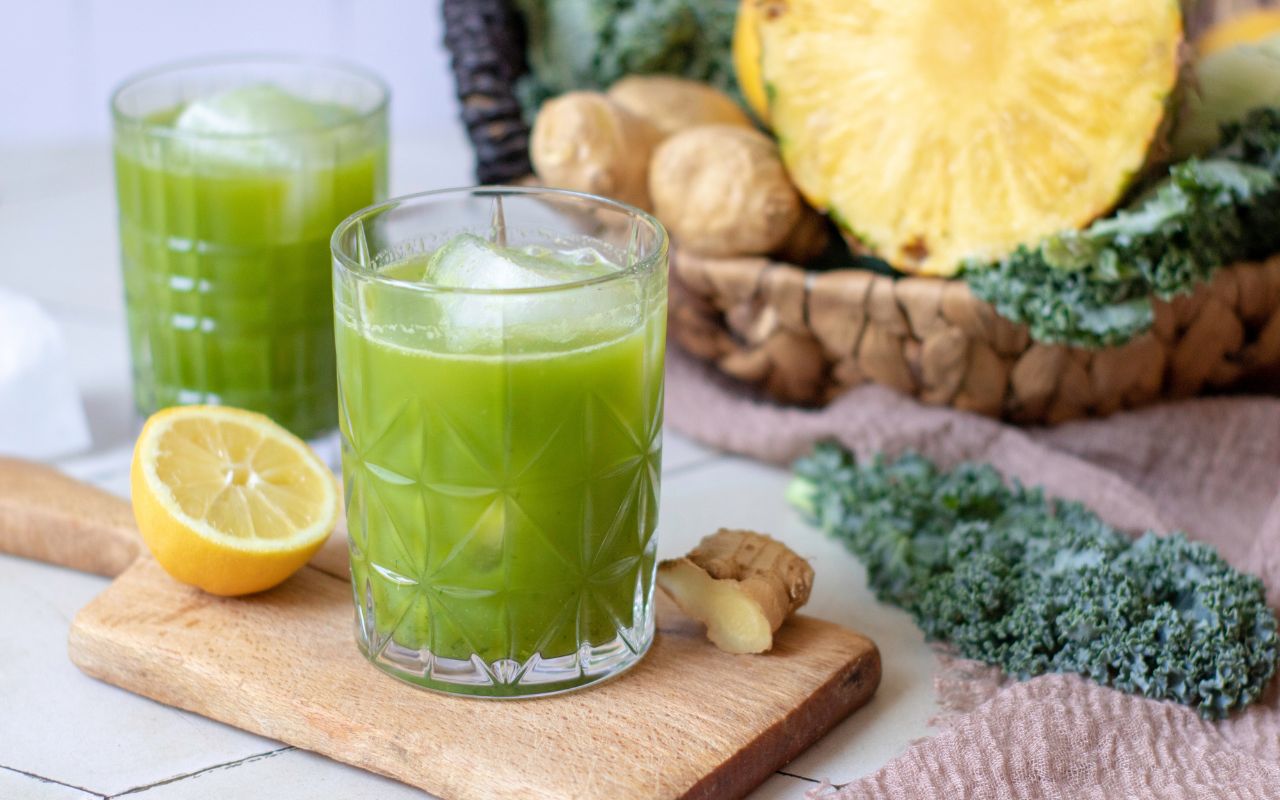Juicing has become a cornerstone of the modern wellness movement, offering a convenient and delicious way to pack a bounty of nutrients into your daily routine. But juicing at home can have a bit of a learning curve due to the myriad of juicer types, juicer parts and attachments, and the challenges that come with trying to clean one.
In this article, we’re going to dive into all you need to know about juicing and how to use a juicer effectively. Get ready to discover the benefits of juicing, receive tips on the best way to juice ingredients, and watch a step-by-step video tutorial on how to use a juicer (or blender) to juice your fruits and veggies. We’ll also provide you with a couple of tasty juice recipes for optimal nutrition and hydration.
Whether you’re new to juicing or a seasoned pro looking to refine your skills, this guide is packed with juicy (sorry, had to do it) information on using a juicer.
What to Consider When Juicing at Home

If you’re looking to enhance your daily water intake by adding a hydrating and nutrient-dense twist, then freshly squeezed juices can be a tasty way to do that. Recommendations for fluid consumption are approximately 9 cups a day for women and 13 cups a day for men.
If you’re looking for a more individualized approach to staying hydrated, divide your weight (in pounds) in half and aim to consume that amount of water daily in ounces. For example, if you weigh 150 pounds, you would want to drink about 75 ounces (9–10 cups) of water or other hydrating liquids a day.
To keep your blood sugar balanced and under control, consider juicing all vegetables or a combination of mostly vegetables with a small amount of fruit to add just a touch of sweetness.
We typically recommend whole fruit over fruit juice, since whole fruit can offset the natural sugar in fruit due to its fiber content. Fruit juice tends to be a more concentrated source of sugar, even though it’s natural. Some experts recommend no more than ¾–1 cup of fruit juice a day for that reason.
That said, research suggests that polyphenols could become more bioavailable when fruits are juiced rather than consumed whole because fiber inhibits some of those compounds.
Juicing Benefits
Juicing can be healthy for many people due to the concentration of nutrients. Some of the benefits of juicing include:
- Boosting fruit and veggie intake: The CDC reports that only 1 in 10 people consume enough fruits and vegetables each day. Since sipping on a beverage may be more convenient than snacking on whole food, juicing may be a way to provide vitamins, minerals, and phytochemicals to those who aren’t consuming enough whole fruits and veggies. (I have to admit that I’m one of the few who doesn’t fall into this category, since I could never swap out the opportunity to bite into a juicy and crispy apple!)
- Nutrition during fasting or time-restricted eating: Juicing may also be a source of nutrition for those who are fasting or following a time-restricted way of eating.
- Nutrition and hydration for those with a decreased appetite or inability to consume certain foods: Juicing may also be an easier way to consume nutrients for those with reduced appetites, difficulty chewing or swallowing whole foods, or aversions to certain textures.
- Inflammation-fighting compounds: Obtaining boatloads of veggie and fruit blended juices can provide essential nutrients and antioxidants that have been shown to reduce inflammation and support the immune system.
- Protection against cardiovascular disease: Research also suggests that the wide variety of polyphenols, vitamins, and minerals in juices can protect against cardiovascular disease due to their blood pressure, lipid, and inflammation-lowering capabilities.
- More bioavailable nutrients and phytochemicals (potentially): While studies are lacking, one review of the research suggests that some nutrients and compounds, like polyphenols, may be more bioavailable since the fiber is removed.
Juicing Tips and Instructions
Wash Fruits and Veggies

To streamline your juicing process, it may be helpful to wash and chop your fruits and veggies the moment you get home from the grocery store, farmers market, or garden. Use this practice only if you plan to juice within two days, as moisture from washing can cause rapid spoiling.
Washing fresh produce will prevent you from sipping on gritty juice by removing dirt, sand, and other residue. It will also help remove pesticides if you’re using conventional produce.
For the most effective methods to remove pesticide chemicals from produce, read our article How to Wash Vegetables and Fruits to Remove Pesticides.
Cut Up Fruit and Remove Rinds
It’s best to cut your produce into chunks or pieces before feeding them into your juicer. Doing so makes the process more manageable and reduces the possibility of clogging your juicer.
To avoid bitter juice, you can remove the tough rinds of oranges, lemons, and limes. If you don’t have time, it’s also fine to keep the skin and rind on while funneling them through the juicer. Just know that it may result in more bitter flavors.
To keep your juicer running smoothly, definitely remove very hard skins from produce, like melons. To avoid jamming — or worse, breaking — your juicer or blender, you’ll also want to remove hard pits from fruits like peaches or apricots.
Straining and Storing Your Juice

Once you’ve fed your juicer or blender and have crafted beautiful freshly squeezed juice, it’s time to strain it using a fine mesh strainer or a nut milk bag. Straining will leave the fiber behind. So if you’re looking to optimize nutrition and don’t mind textured juice with pulp, simply start sipping instead of straining!
If you’re a lover of pulp-free juice but hate the thought of wasting good nutrition (we’re with you!), read our article on What to Do With Juicer Pulp. Using the pulp in other culinary applications allows you to still benefit from the fiber in the fruits and vegetables — something that is severely lacking in many people’s diets.
For the best flavor and to optimize nutrition, consume your juice immediately or store it in an airtight container in the refrigerator for up to 2–3 days. Note that it may lose some of its fresh flavor. And the nutritional value will decrease with each day it’s stored. P.S. We’ve also had success freezing juice in an airtight freezer-safe container for up to one month! Defrost the juice by bringing it to the refrigerator until it’s thawed and ready to drink.
Cleaning a Juicer
Since juice residue can easily build up on juicing parts and blenders, it’s best to clean your juicer or blender immediately after juicing. Start by dismantling the parts for individual cleaning, then soak and scrub with soapy water. Check with your individual manufacturer, as some parts may be dishwasher-safe. Follow the cleaning instructions from your juicer’s user manual.
How to Use a Juicer

In the video below, you’ll learn about:
- Considerations for juicing
- The types of juicers and how they’re different
- How to select ingredients for juicing
- How to use your blender for juicing if you don’t have a juicer
You’ll also see a demonstration of how to use a masticating juicer and how to juice using a blender and nut milk bag.
https://www.youtube.com/watch?v=rZ8kBzLzKFA
Juice Recipes
Have some fun in the kitchen with these nourishing juice recipes! Featuring a variety of colorful veggies and natural sweetness levels, these easy-to-make juices are a delightful way to boost your nutrition while savoring the fresh, homemade flavors of fresh juice!
1. Beet Carrot Turmeric Juice

Beets, carrots, turmeric, apples, and cucumbers are some of the most hydrating fruits and vegetables and are perfect for creating delicious, nutrient-dense beverages. This Beet Carrot Turmeric Juice is packed with anti-inflammatory compounds that act as antioxidants, including betaine in the beets, carotenoids in the carrots, and curcumin in the turmeric. Enjoy a one-ounce shot or a small glass daily. It’s a great way to get a concentrated source of nutrients while staying hydrated and healthy!
2. Green Goodness Juice

Green Goodness Juice takes plant power to a whole new level. Made with kale, celery, lemon, ginger, and cilantro (or parsley if you’re not a fan of cilantro), this juice is like a ray of sunshine for your body. You can also reuse fruit and vegetable scraps you don’t want to waste. Drinking this juice will help you shine your brightest while keeping you cool and refreshed!
3. Digestive Wellness Juice

Our Digestive Wellness Juice is a hydrating blend of nourishing plants designed to support your gut health. This vibrant juice combines kale, fennel, turmeric root, ginger root, pineapple, and lemon juice for a nutrient-dense and naturally sweet drink. Kale and fennel support a healthy microbiome, turmeric root provides anti-inflammatory benefits, and ginger root soothes the digestive tract. Pineapple adds natural sweetness and digestive enzymes, while lemon juice enhances flavor and hydration. Digestive Wellness Juice not only helps you stay hydrated but will also give your digestive system a nourishing boost!
Enjoy Juicing at Home!
Juicing can be a delightful and nutritious addition to your daily routine. It offers an array of health benefits and is a convenient way to increase your intake of fruits and vegetables above your whole food intake.
Whether you’re new to juicing or a seasoned enthusiast, the tips and recipes shared in this article will help you make the most of your juicing journey. Remember, the key is to experiment with different combinations, enjoy the process, and sip your way to better health. Happy juicing!
Tell us in the comments:
- What’s your favorite juice combination?
- Which juicing method have you tried, and what’s your experience with it?
Featured Image: iStock.com/fcafotodigital



